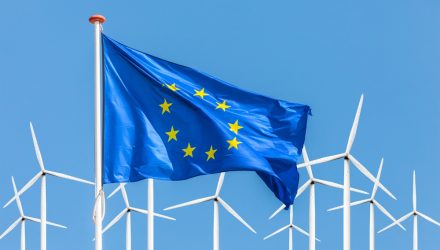The EU is considering raising its current clean energy targets for 2030 from 40% to 45%, with a boost to renewable energy goals when it sets into motion the RePowerEU plan on May 18, reports Bloomberg.
The higher mandates will mean that member states will need to reduce the amount of energy they consume by at least 13% based on estimates made in 2020, compared to the 9% reduction expected now.
It’s all part of the rapid pivot away from reliance on Russian oil and gas. The EU is looking to make the transition focused on climate change, with a more rapid establishment of renewable energy such as solar panels, better energy savings, and diversifying where it acquires energy internationally. The plan also entails creating new tools that will increase the rate at which investment goes into the energy transition from fossil fuels and into renewables.
While more ambitious than current goals, it could see savings for the bloc of 80 billion euros on gas alone each year, along with 12 billion in savings on oil, and 1.7 billion on coal imports. The commission is looking to encourage investment by utilizing financing from its Innovation Fund which draws from the revenue made on the sale of carbon permits within the EU Emissions Trading System.
The plan will address how much is needed for the infrastructure changes and new pipelines required for the supply of LNG from new sources but will require that all new developments are also capable of transporting hydrogen as an alternative fuel source. The domestic production of renewable hydrogen will have a target of 10 million tons by 2030, with an additional 10 million tons of hydrogen imports. Biomethane production is estimated to be 35 billion tons.
Investing in Carbon Allowances in the EU and Globally
Kraneshares offers both a targeted investment opportunity into carbon allowance futures in the EU as well as a broader, globally focused one that includes the EU allowances market futures as part of its exposure.
The KraneShares European Carbon Allowance ETF (KEUA) offers targeted exposure to the EU carbon allowances market and is actively managed. The fund’s benchmark is the IHS Markit Carbon EUA Index, which tracks the most-traded EUA futures contracts, the oldest and most liquid market for carbon allowances.
The market currently offers coverage for roughly 40% of all emissions from the EU, including 27 member states and Norway, Iceland, and Liechtenstein. KEUA has an expense ratio of 0.79%.
The KraneShares Global Carbon ETF (NYSE: KRBN) offers a global approach to investing in carbon allowances markets and diversity in its exposures. KRBN tracks the IHS Markit Global Carbon Index, which follows the most liquid carbon credit futures contracts in the world.
This includes contracts from the European Union Allowances (EUA), California Carbon Allowances (CCA), and Regional Greenhouse Gas Initiative (RGGI) markets. KRBN carries an expense ratio of 0.78%.
For more news, information, and strategy, visit the Climate Insights Channel.

